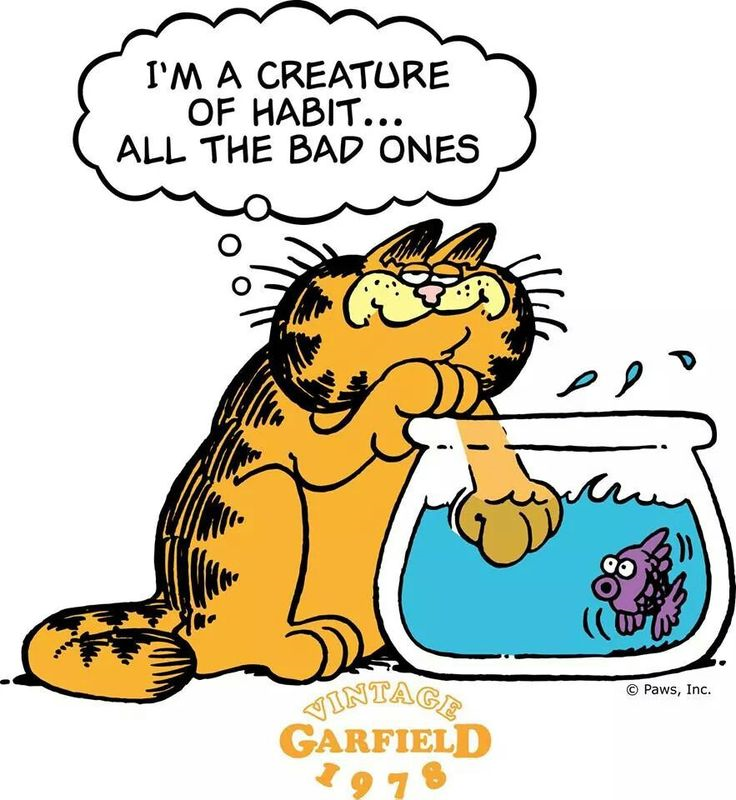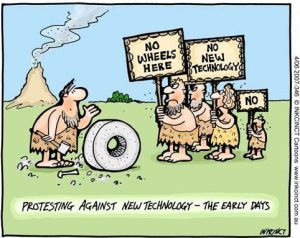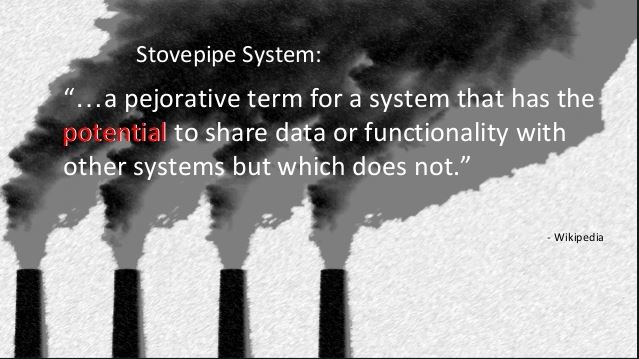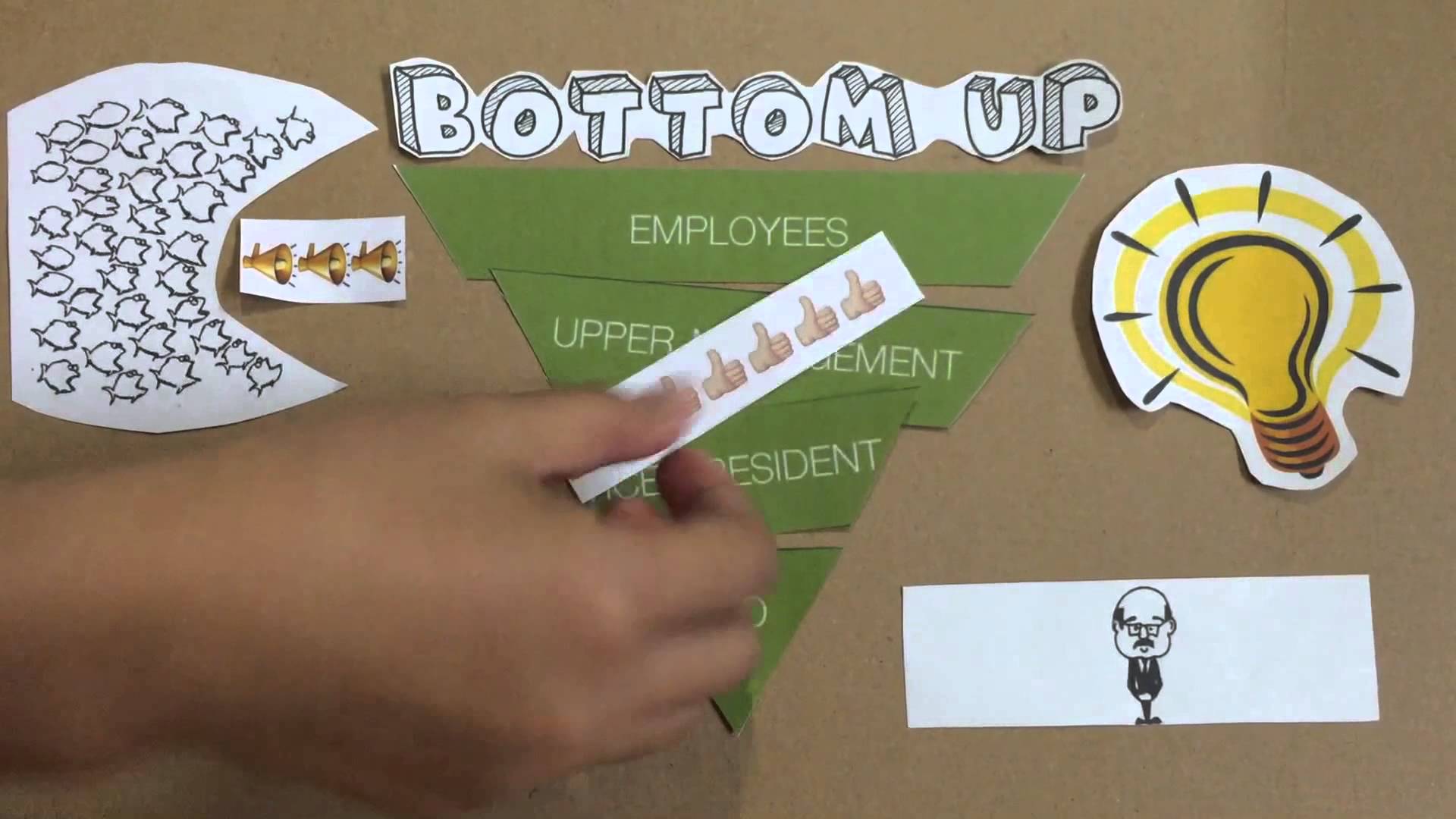We all have our routines to make sure we remember every activity. In the morning, my routine helps me as I age to remember the increasing number of things I should do. If I vary that routine, I invariably forget something. The same is true with our jobs, our  organizations, and our processes at work.
organizations, and our processes at work.
The benefit of routine can easily be overcome by the downside of getting stuck in a rut. By nature, our organizations are dynamic because our customers are continually requesting/demanding new services, new ways of operating, and competitors are ever-present to respond to those new requests. Thus, change is not a once in a decade or an annual event; Change is inevitable and perpetual and we must stay on our toes to keep up.
In this digital age, sales and marketing have the unique situation right now to lead their organizations out of the traditional ways. Social media such as Facebook, LinkedIn and other apps have transformed the way we recruit, do our daily jobs, maintain customer relationships, sell, measure performance, and get feedback. Through such social media, as well as direct contact with customers, sales and marketing organizations some great insights into what works and does not work with their customers.
Why wouldn’t sales and marketing charge forward with change? Potential obstacles in the sales and marketing culture (not unique to them alone) that prevent taking optimal advantage of their situation with customers are: 1) resistance to change; 2) stove piped organizations and processes; and 3) top-down decision making.
Resistance to Change Can be Helpful up to a Point

Resistance to Change can be viewed as the way people or organizations try to understand the Change, its impact, and whether it is going to help or hurt specific individuals--up to a point. When there is continuous, repeated resistance, then it becomes obstructionism. We had a healthcare client who wanted to grow, but the sales force would not make necessary changes. They had their sales process with their “traditional” sales tools, and refused to adapt to a more customer-centric sales process using CRM (customer relationship management) tools. They were victims of their own past success. They were successful in the past doing things the “old” way, and management was afraid to force the issue. Sales people are typically reluctant to share their contacts and progress through CRM apps, because it is, in their mind, relinquishing power and control. They were stuck in a rut until new leaders were willing to change out a few sales people, signaling the Change was mandatory and inevitable.
Stove Piped Organizations and Processes are a Drag
Our functional, stove piped structures served organizations well in the 20th century, b ut with digital environments, our organizations and people must be involved in end-to-end processes. Looking at an end-to-end process of order-to-cash is preferable to the conventional stovepipes of Marketing, Sales, Operations, and Accounting. Hand-offs cost money: dropped balls, errors, and time lags are often unresponsive to customer needs, and in the long run reduce sales and profitability. Customers now expect to experience one seamless process to buy a product or service, not “we’re on hold until we get xyz (the next function) involved.” Functional organizations typically have centralized decision making, which slows down the sales cycle, and decisions are not made based on specific knowledge of the customer. It is simply too bureaucratic, and the decision-makers are simply too far removed from the customer and their activities. One of our wholesale clients was in the beverage industry and was concerned about the number of errors in their orders, the time it took for a customer to order, and the coordination required between the myriad functional departments to get an order processed. Decisions then had to be made centrally, because any one department didn’t have the perspective of the entire process. Having process owners who oversaw the cross-functional process and having decision-makers close to the process expedited the process, reduced errors, and improved customer satisfaction significantly.
ut with digital environments, our organizations and people must be involved in end-to-end processes. Looking at an end-to-end process of order-to-cash is preferable to the conventional stovepipes of Marketing, Sales, Operations, and Accounting. Hand-offs cost money: dropped balls, errors, and time lags are often unresponsive to customer needs, and in the long run reduce sales and profitability. Customers now expect to experience one seamless process to buy a product or service, not “we’re on hold until we get xyz (the next function) involved.” Functional organizations typically have centralized decision making, which slows down the sales cycle, and decisions are not made based on specific knowledge of the customer. It is simply too bureaucratic, and the decision-makers are simply too far removed from the customer and their activities. One of our wholesale clients was in the beverage industry and was concerned about the number of errors in their orders, the time it took for a customer to order, and the coordination required between the myriad functional departments to get an order processed. Decisions then had to be made centrally, because any one department didn’t have the perspective of the entire process. Having process owners who oversaw the cross-functional process and having decision-makers close to the process expedited the process, reduced errors, and improved customer satisfaction significantly.
Top Down Decision Making is Too Far Removed from Customers

A privately held aerospace organization historically developed products and services based on what the CEO thought the customers needed. Unfortunately, he was not close enough to the day-to-day operations of his organization or his customers’ organizations to make the right calls. The organization tried five times to automate the sales and operations-related processes – all with failures. They simply failed to get customers involved in operational processes that were integral to key customers’ daily business. Several years ago, before Facebook, Snap and other apps were introduced, an organization would not envision the power of such instant communication. When we worked for a credit card company in the 1990’s, their goal was to eliminate cash. At that time, few would have ever dreamed of a cashless society. Today, we have PayPal, Venmo, and debit cards that greatly reduce the need for cash. These organizations have top-down and bottom-up decision making, especially when it is related to product development and customer-focused design. The top-down perspective is at the strategy level with a lot of innovation, and the bottom-up perspective is close to the customers’ immediate needs and expectations.
Sales and Marketing Organizations Are Positioned to be Leading the Charge to Change
Since Sales and Marketing organizations are generally the closest to the customers, they are in an ideal position to lead the charge to Change. Such organizations are investing heavily in digital environments, making the necessary end-to-end processes work, and changing the culture to focus heavily on the revenue generating element – the customers!
How Do You Make the Change
1. We look at a map, decide how far we want to go each day, and make reservations for places to sleep or park the RV each night and at our final destination. Similarly, to successfully change your sales approach, you need to decide where you want to be at each milestone, normally at the end of the one, two, and five-year points. Only instead of making a reservation, you need to describe how the organization will look at each stopping point from the perspective of ownership, employees, suppliers, and most importantly, customers.
for places to sleep or park the RV each night and at our final destination. Similarly, to successfully change your sales approach, you need to decide where you want to be at each milestone, normally at the end of the one, two, and five-year points. Only instead of making a reservation, you need to describe how the organization will look at each stopping point from the perspective of ownership, employees, suppliers, and most importantly, customers.
2. Next, we rev up the GPS or go to the old maps and plan our route to each destination. In changing sales behavior, you will need a series of Change projects to reach your desired intermediate and final destinations, as each one impacts at least one of the following:
a. Process
b. Tools, including facilities and technology
c. Performance Management
3. At long last, the family arrives at its final destination – Disneyworld, the beach, or somewhere else that was worth the trip. The final question: how do we make sure that we get the enjoyment we anticipated? The question holds for organizations as well. Once we arrive at the end of the organizational journey, how do we know we have arrived, how do we retain the benefits, and how do we treat it as a new beginning and not an end to improvement? Stated another way, we need measurements to ensure we have arrived, process ownership to ensure accountability for sustaining the improvements, and an organized approach to continuous improvement to make sure we don’t once again fall behind competitors and the needs of our customers.
We refer to the document that encompasses this approach as a “Playbook,” but if you prefer “Roadmap,” or “Strategy,” the concept remains the same. If you would like a copy of our Whitepaper on preparing a Playbook, please follow the link below.





